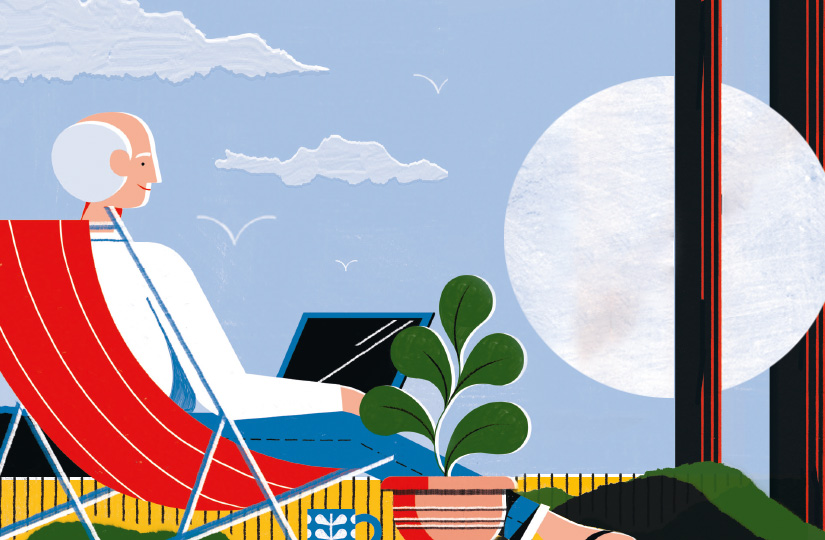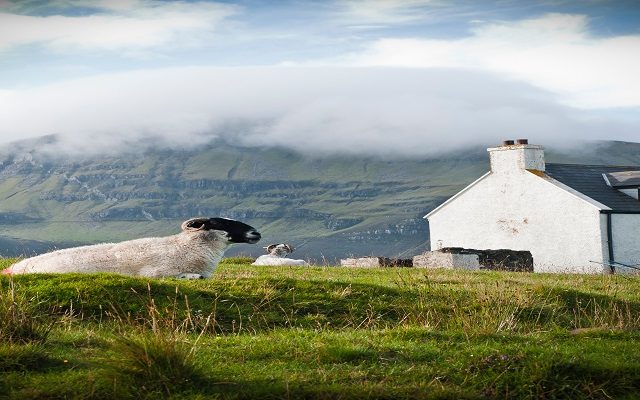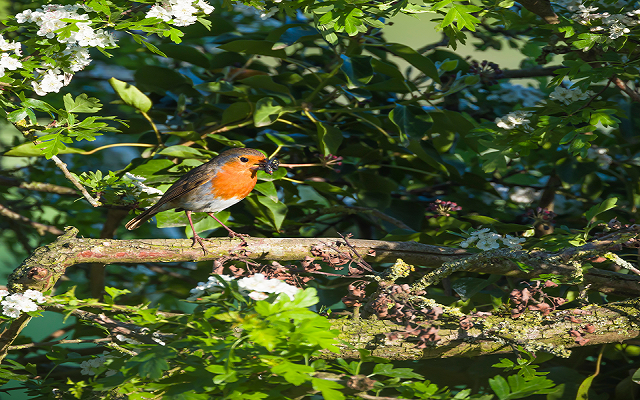Six consumer trends which offer rural estates diversification opportunities
Understanding shifting demographics and consumer behaviour has never been more important, as rural estates look to diversification opportunities to generate new income and reduce risk. Strutt & Parker experts identify six themes and the opportunities they could bring.
The experience matters
Consumers are seeking ‘experiences’, so estate owners and retailers are understanding they need to offer interaction, rather than a purely transactional relationship with their customers.
With social media ubiquitous and people constantly connected, many now desire deeper experiences than simply making a purchase in a shop. They want these to enrich their lives and be something they can talk about – perhaps even share on Instagram. People want to attend unforgettable festivals, events, or films on a farm. They want something unique.
A recent example in Sussex is Eggs to Apples, which has taken the idea of the traditional farm shop a step further and has created a physical space alongside a social media presence, which celebrates local food, chefs and hosts mini community events. Produce made by skilled people, with excellent provenance, is very much in-demand at the moment. It’s this kind of ‘social benefit’ that simply can’t be bought at a supermarket.
Although they are an important demographic, we shouldn’t place all the emphasis on catering to millennials and young people. In any context, the ‘offer’ has to be relevant to the demographic which is present. However, landlords shouldn’t just assume that what has worked elsewhere will work on their estate – understanding the make-up of the local customer base and achieving community buy-in is vital.
The focus on wellness
The rising consumer trend for wellness comes at a time when the NHS is under a huge amount of strain, and is looking for alternative ways of treating people, rather than just focusing on the illness. Increasingly, the rural environment is being seen as a key part of promoting good mental health and physical wellbeing.
In the coming years, NHS England is likely to ‘prescribe’ patients to undertake activities in outdoor settings, opening up new opportunities for farms and estates that wish to diversify.
There are considered to be seven dimensions of wellness (emotional, spiritual, intellectual, social, environmental, occupational and physical). Farms and estates have a wealth of natural resources that can help people engage with and fulfil many of those dimensions.
Environmental wellness is achieved through spending time in calming environments. We demonstrate our own desire to feel connected to nature every time we pay to visit houses in national parks, or travel for miles to be able to walk along coastal paths. This connection to nature, called ‘biophilia’, is a key opportunity for estates seeking low investment diversifications, such as woodland running, riding and walking trails or forest glamping opportunities, that support barn-conversion retail or food and drink offerings.
Friendly interactions with animals are also good for emotional wellness, boosting oxytocin levels – the ‘emotional’ hormone. So opening livestock farms to the public and offering experiences like shepherding courses could be further sources of ‘wellness income’ for estates.
Changing needs in rural housing
Seismic demographic shifts are shaking our once-familiar notions of the rural housing market. One of the biggest trends on the rise is build-to-rent in villages. Typically, people associate this concept with blocks of urban flats but, in a growing number of locations, it is being adapted for single family homes, offering tenants high-quality accommodation with a greater security of tenure, as well as access to all-important amenities.
There are also growing opportunities for estate owners to cater to the UK’s burgeoning retiree population, who are increasingly looking to downsize to homes in communities that offer suitable services and accommodation. Here they can still enjoy excellent amenities and cultural experiences, but with one eye on the potential for assisted living or care in the future.
Meanwhile, as digital connectivity improves, more people are leaving cities to live and work in rural settings. In our Housing Futures report, we identified a ‘tribe’ we call ‘Rusticarians’ bringing a new entrepreneurial dynamism to villages. Examples might be a retired banker setting up a cheese-making business or a tech company CEO keen to live in the countryside and work at home. Rural areas in England now have the highest rate of homeworkers and, with the 5G rollout bringing broadband-equivalent speeds to mobile networks, this trend is set to rise.
The baby boomer market
By 2026, almost a quarter of the UK’s population will be aged 65 or over. Thanks to better healthcare and higher living standards, the ‘baby boomer’ generation enjoy increasingly active lifestyles. They are also one of the most affluent demographics within society, and are loyal to businesses that cater for their needs and represent their ideals. They can share certain traits which represent opportunities to estates.
For example, they are age agnostic and value their health over wealth. As a consequence, they are often keen to keep fit and take part in activities. Opportunities for estates include conversion of walled gardens into garden centres, shops and cafes, or creation of yoga studios, spas and senior-friendly gyms.
Many baby boomers are dog owners, so pet-friendly walking or cycling routes – particularly with the growing use of power-assisted e-bikes – that loop back to the bike hire shop and dog-friendly food or drink outlets, are also likely to be popular.
In addition, baby boomers tend to be highly supportive of charitable causes. There are, therefore, opportunities for estate owners to make their heritage properties available for fundraising events. Venue fees, sale of alcohol, hire of furniture and upcycled estate objet d’art as props and decorations can generate an important income source for estates.
Meanwhile, estates near to heritage attractions like National Trust properties might also consider the creation of high-end Air BnBs, for a demographic that are traditional, but tech savvy.
Digital connectivity is essential
One of the first questions we often hear when people rent a rural property is: “What’s the internet connection like?” Good digital connectivity is no longer just a nice-to-have – it is an essential.
Less than 20% of 16- to 24-year-olds said they would be willing to live in an area with poor broadband, according to the RSA Food, Farming and Countryside Commission, but this isn’t solely a young person’s issue. It matters for everyone.
Whereas younger individuals, such as teenagers and students returning from university, expect fast broadband, almost as their lifeblood in rural or semi-rural locations, older people are increasingly dependent on high-speed connectivity, too.
Good broadband opens up remote working opportunities, making estates more attractive to tenants keen to move from the stress of the city to find a better work-life balance in the countryside. And they bring with them diversity, wealth and new opportunities for the estate economy.
Another important type of connectivity is building relationships with the public and the estates that will thrive will be those that are inclusive and engage with those beyond the gate. Embracing social media and online marketing is a key part of a forward-thinking approach to promoting a business. Such engagement helps the public ‘buy into the brand’ and creating a genuine sense of community can foster a desire among people to live, work and play in your location, bringing further investment and new possibilities.
Trends in food consumption
People are much more conscious now about what they are eating – not only for health reasons, but also due to concerns around climate change.
Consumers are becoming more focused on foods which they think have less environmental impact, so we’re seeing a rise in plant-based food, plus reduced consumption of beef, sheep and dairy produce. Given the UK already exports 30% of its sheep, this trend is expected to hit the sheep sector hardest, particularly if we don’t end up with a good Brexit trade deal.
Although it is perhaps too early to know how this will affect farmers and their decisions, they should be considering the potential future impact and acting now. Options include reducing livestock numbers and moving to a more extensive system, targeting consumers who may be willing to pay more.
With food provenance becoming a higher priority for consumers, this goal should be achievable with opportunities for estates to capitalise on their traceability and welfare standards. For example, people often go out of their way to choose Welsh lamb or Aberdeen Angus beef.
Meat marketed at the local level can be very successful if estates are passionate about building a brand for their products – helping consumers tap into the idea that food has a wonderful, specific quality associated with its particular place of origin.
This article first appeared in the Autumn/Winter 2019 issue of Land Business.
Find out more about the challenges and opportunities when setting up a new venture in our Diversification Demystified paper.






